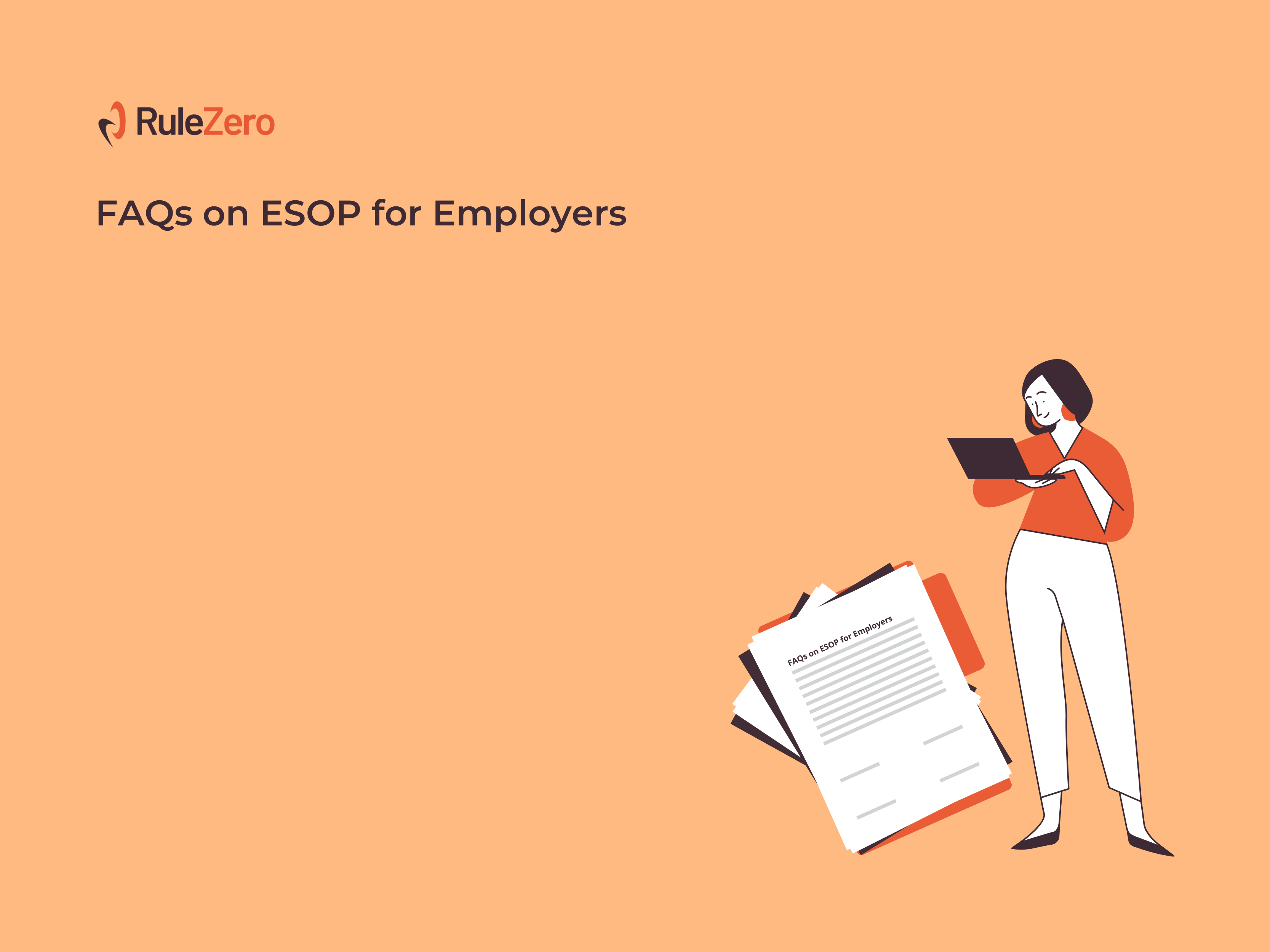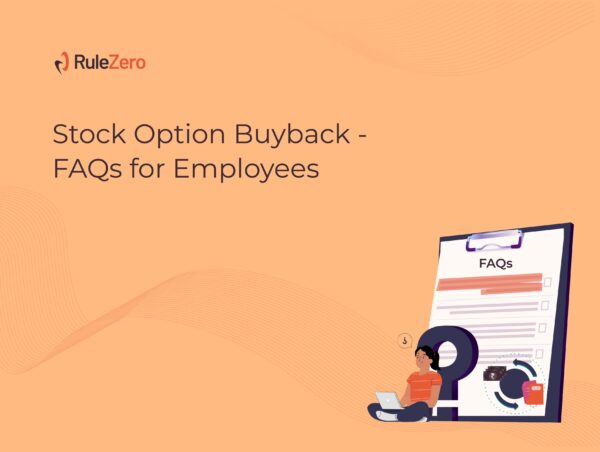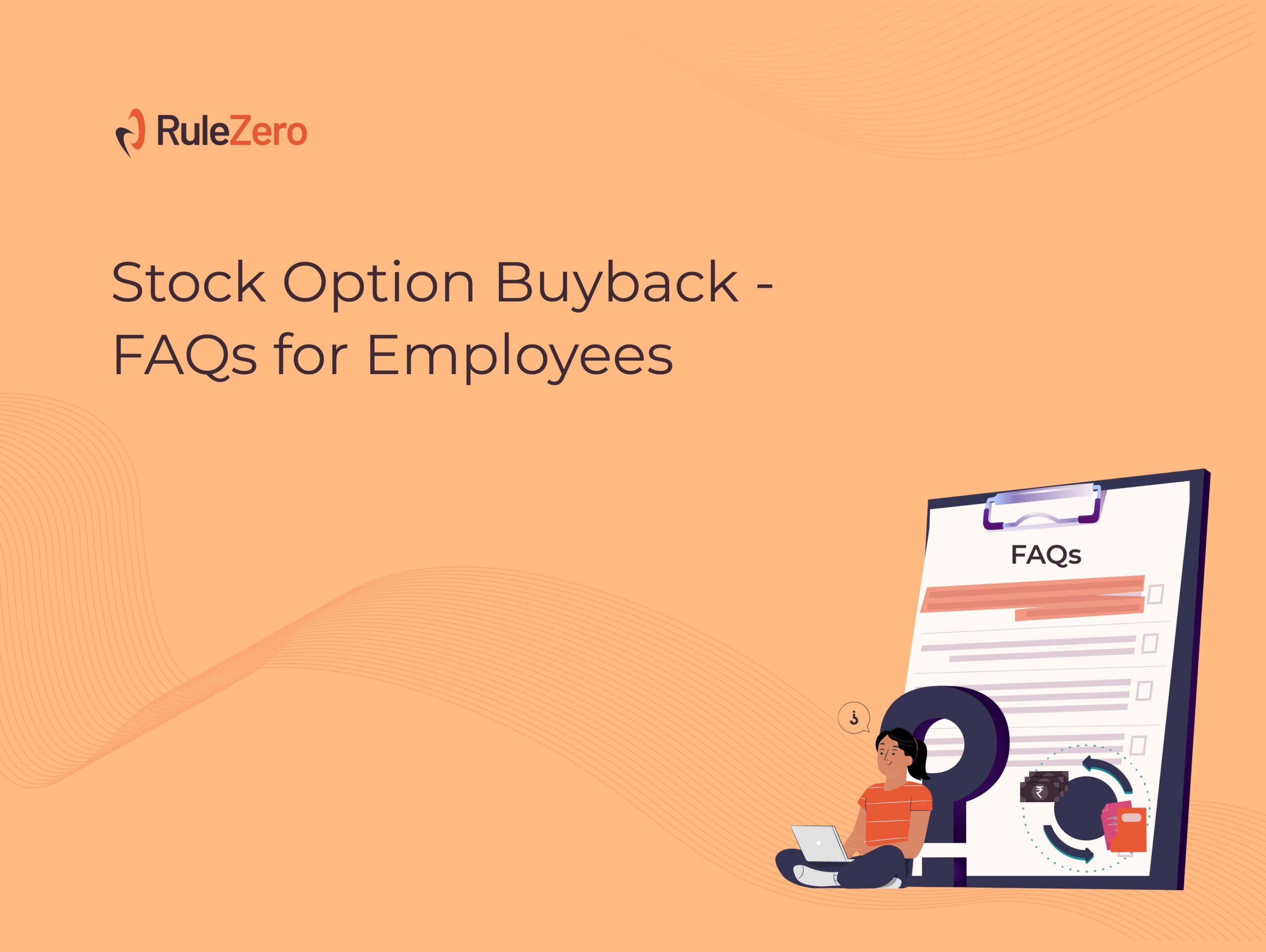Ranveer has arranged a meeting with his lawyers to initiate the ESOP process. A good old friend that he is, Ranveer has requested me to be part of the meeting and provide my valuable inputs.
We had a free-wheeling discussion around stock options, their purpose, objective, process, issues etc. Ranveer was keen on making his option plan a win-win and therefore we delved into a lot of questions. We also decided to engage on this topic further because this is so deep, interesting and relevant.
First and the foremost, Ranveer came out with questions which were currently running at the back of his mind. In this Part II of the Options Series – FAQs on ESOP for the Employer, I have covered my explanations to these questions.
1. I have heard of a concept called phantom grants. What is that?
In phantom grants (also called Stock Appreciation Rights), the employee gets the economic benefits associated with Options but not the right to become a shareholder. The employee is entitled to the difference between the Strike Price and the fair value of the underlying shares (upon Vesting). In cash terms, it is identical to Options. From the company’s perspective, the value of the vested phantom units has to be recorded as a cash liability on the books.
Asmit quickly noted that there are three important concepts. First is the number of size of the pool / Options to grant, second is the Strike Price and third is Vesting Conditions. He wanted to delve on these three a little more and came up with very specific questions.
2. What should the size of the pool be? How do you determine the number of Options to Grant?
At a very early stage, when you are trying to build the founding team, there is no value in the company. There is only a story and belief in the founders that they can pull off something big.
At this stage, everything is discussed in percentage terms. Though expressed in percentage terms for discussions, the actual allocation should always be made in actual number of shares.
Many factors go into determining the number of Options to grant. These include the seniority of the employee.
3. Are there different models for strike price?
Yes, there are two broad models. Model 1 is the par value of the share. This does not apply in legal terms in the case of Phantom grants. Phantom grants have a nil Strike Price.
Model 2 is linking the strike price to the fair value of the shares at the time the grant is made. The discount may range from 0% to whatever the company determines. 25% to 40% would be a good number. It works well both for the employee and the company.
Companies may grant a lower number of Options in Model 1 or a higher number of Options in Model 2. In Model 1, the employee has a higher chance of making a return. This becomes fairly attractive in late stage companies because the employee knows that there is a high likelihood of making something out of the Options. In Model 2, if the company does well, the employee may actually make a much higher return.
Given the dynamics explained in the previous paragraph, one should not look at a low strike price as employee friendly and a higher strike price as company friendly. Dig deeper and find the better model for yourself. Maybe, a combination will work well and some companies do that.
4. Is there any other way of rewarding the employees without actually allotting shares to them?
Yes indeed.
You must have read news about the ESOP Buybacks announced in 2020 and 2021. Companies have rewarded the employees by paying cash equivalent to the value of the vested options. There was no allotment of shares.
Another method is to introduce a plan for Stock Appreciation Rights or Phantom Rights instead of the traditional ESOP plan.
5. What are the different models that I can consider for making grants? What is the difference between each model?
Grants are made under various structures. The commonly used structures in India are:
- Grants that permit exercise at the choice of the grantee (“Free Exercise Plans”).
- Grants that restrict Exercise to specified situations – usually M&A, Listing or for providing liquidity to grantees (“Restricted Exercise Plans”).
- Stock Appreciation Rights Plans / Phantom Grants (“Appreciation Rights”).
In Free Exercise Plans, the grantee becomes a shareholder upon exercise. In Restricted Exercise Plans, companies manage the exercise in such a way that the grantee exercises only in relation to a liquidity event[1] for the grantee. This restriction falls away after a listing of the shares. When granted Appreciation Rights, the grantee does not have the right to become a shareholder even after a listing of the shares. Restricted Exercise Plans and Appreciation Rights plans are similar in that the grantee gets only the economic benefits associated with shareholding.
The other key aspect to note is the taxability for the grantees / employees. In Free Exercise Plans, gains bifurcated between ordinary income and capital gains – (a) the difference between the strike price and fair value at the point of exercise is considered as ordinary income at the time of exercise and (b) the difference between the sale price and the fair value at the time of exercise is capital gains (there could be a capital loss as well). In Restricted Exercise Plans, except following a listing of the shares (when Options may be exercised), gain is usually considered as ordinary income. In Appreciation Rights plans, the entire receipts by the grantee will be considered ordinary income.
6. Do Option Plans create any liability or risk for the company?
Stock options are essentially employee benefit plans. The company must provide for the annual estimated expense over the term of the plan. For instance, in Free Exercise Plans and Appreciation Rights Plans, the company must provide for the expense over the vesting period. The expense is calculated as per the prescribed accounting standards. In Restricted Exercise Plans, the expense is booked when there is certainty of the occurrence of the liquidity event.
Free Exercise Plans carry the risk of stake dilution, interference in managerial affairs and the possibility of a hostile takeover. In Restricted Exercise Plans, this risk is crystallized only in the case of a liquidated event. There is no such risk under the Stock Appreciation Plans. There are a number of ways of mitigating the risk like restricting the stock option pool to a small percentage of the post-issue share capital, opting for ESOP buyback at the time of exercise and adequate documentation in the form of accelerated vesting – single trigger acceleration or double trigger acceleration – can ensure that the founders get the benefit of accelerated vesting in unforeseen circumstances.
7. How is the Fair Market Value (FMV) of ESOPs or the underlying shares determined? Here, the company was valued somewhere in June 2021 at the time of procuring the Series A funding. Can the same value be used for determining FMV of ESOPs?
Well, the answer is Yes and No.
FMV of the shares is based on whether or not the shares are listed on a recognized stock exchange in India at the time of exercise. The FMV of listed shares is linked to the market price on the Exercise Date. In case of unlisted shares, the FMV is calculated by a Merchant Banker.
Valuation for the purpose of funding would have been a commercial valuation or a valuation under FDI regulations. There are separate regulations for valuation of ESOPs for the purpose of accounting and income tax. Besides, many companies follow the practice of valuing ESOPs annually.
Thus, the valuation at the time of funding may or may not be useful at the time of issue of ESOPs.
8. Is there any difference from an administrative / management perspective?
Indeed, there is.
In Free Exercise Plans, the company will need to treat the grantee as a shareholder and ensure compliance with the applicable regulations. Plans usually provide that Options will lapse if an employee leaves employment unless exercised within a defined duration (usually a few months at the most). Given the significant amount of taxes that need to be paid, this becomes a significant retention tool. Employees would rather not want to lose the Options or pay taxes upon exercise without clarity on liquidity. Further, the company may become a public company if the number of shareholders exceed 200 (except employees who exercise the Options and are issued shares prior to the employment coming to an end).
In Restricted Exercise Plans and Appreciation Rights Plans, the company does not have to worry about shareholder related compliances. Since employees are not allowed to Exercise the Options, termination of the employment cannot result in the Vested Options lapsing. A significant retention tool is therefore lost. However, under the Appreciation Rights Plans, the company will have to record the value of the vested grants as a liability in its books. This may potentially, affect the solvency of the startup as well.
9. I’ve heard some companies permit grantees to exercise options at any time, while others don’t - what are the advantages and disadvantages of these models?
In Free Exercise Plans, options can be exercised as per a pre-determined vesting schedule. The employees can exercise the options at their will once the options vest. The option must be exercised during the exercise window. In Restricted Exercise Plans, the employees have a right to exercise the options only when there is a liquidity event.
A Free Exercise Plan ensures that the employee is entitled to the benefit if he exercises the options. However, in Restricted Exercise Plans the benefit is conditional upon the occurrence of a liquidity event.
12. When employees exercise ESOPs and become shareholders of the company, it leads to stake dilution. How do I prevent that?
This is the wrong way to look at things. One of the reasons you make grants is to enhance shareholder value. What is relevant from everybody’s perspective is the price of a share. Well structured plans help increase shareholder value by increasing the value of the shares. But for the contribution of the employees, the value of the shares could have been much lower. Would you prefer to own 10% of the shares of a company valued at 100 crores or 8% of the shares of a company valued at 200 crores?
11. I’ve heard that trust structures can be used to manage option plans? How does that work?
Some companies implement the plans via trusts. A trust structure may be used for convenience or to consolidate grantees under one vehicle. This facilitates exercise of the grants and enable grantees to get the benefit of capital gain. However, practically speaking the grantee does not have shareholder rights. In unlisted companies, the trust provides an exit mechanism to the grantees especially since there is no secondary market for sale of shares.
14. Is there any relaxation for ESOPs issued by startups?
The employer deducts TDS immediately on exercise of ESOPs. This may lead to a temporary liquidity crunch as you are required to pay the cost of acquiring shares and tax on the notional gain at the time of exercise.
To address this anomaly, employees of certain eligible startups are entitled to defer their tax liability. In such cases, tax liability in the year of exercise can be deferred up to the earlier of:
- 4 years from the end of the year in which the ESOPs were exercised,
- The date of sale or
- The date of cessation of employment.
13. What happens when the company is acquired?
Typically, when a company is acquired, the management changes hands. In a worse-case scenario, it may result in the ousting of the existing founders or the founders leaving the company for good. To protect the interests of the founders, the documents generally provide for a ‘double trigger’ clause. This clause results in accelerated vesting of the stock options on occurrence of both the events – acquisition of the company and a subsequent termination of employment (voluntary or otherwise) within a specified period of time after acquisition.
15. What are the most common terms that the management has to consider when setting up an ESOP plan?
Since ESOP involves a number of processes from designing to governance, the following list of questions will help you structure a basic stock option plan. It has been broken down into 3 sections:
Instrument Related:
- What is the maximum number of stock options that can be granted to an employee?
- What should be the vesting conditions?- Vesting period, cliff, interval.
- What should be the exercise price and exercise period?
- How can stock options be exercised? Can options be exercised multiple times in a given year?
- Should this be a cash or non-cash exercise?
- How long should the exercise window remain open?
- How will the stock options be valued?
Employee related:
- Who are the eligible employees? What is the criteria for an employee to become eligible to receive stock options?
- How many employees will be covered under the stock option plan?
- In an event of termination, death, incapacity of an employee, how will the stock options be treated?
- Who is liable to pay tax pursuant to exercising the options?
ESOP governance:
- What internal policies/conditions need to be complied with before granting stock options?
- What documents need to be in place in connection to stock options?
- What should be the percentage of the stock option pool?
- How will the stock option plan be implemented?
- Who is responsible for managing stock options?
- What are the disclosure requirements of the stock option plan?
- How are the unvested options treated?
- How should stock options be treated in an event of merger/amalgamation/ liquidation of the company?
More in this Series
- Part III – FAQs on ESOPs for the Employee
- Part IV – Regulatory aspects of ESOPs
- Part V – ESOPs as a hiring strategy
- Part VI – Wealth creation through ESOPs










